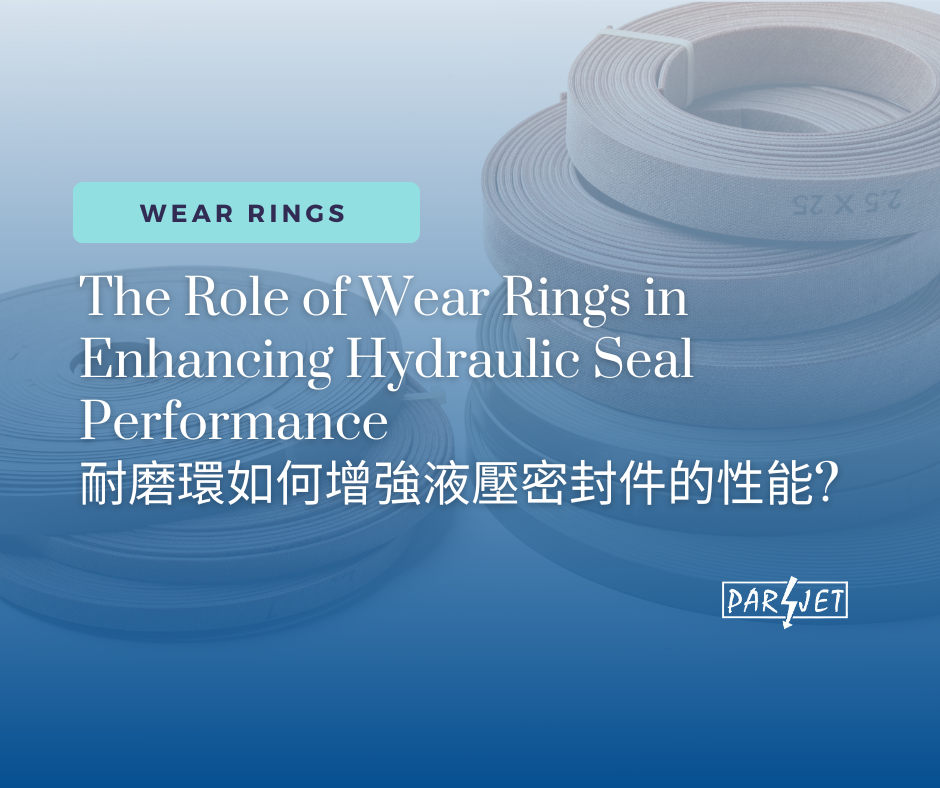The Role of Wear Rings in Enhancing Hydraulic Seal Performance
In the world of hydraulic systems, wear rings play a vital role in optimizing the performance of hydraulic seals, ensuring the longevity and efficiency of equipment. Also known as guide rings, wear bands, or guide tapes, wear rings are designed to prevent metal-to-metal contact between the moving components of hydraulic cylinders, reducing friction and preventing damage. This article explores the importance of wear rings in hydraulic systems and how they enhance the performance of hydraulic seals.
What Are Wear Rings and Why Are They Important?
Wear rings, guide rings, wear bands, and guide tapes serve as a protective layer between the piston and bore or the rod and cylinder head. Their main function is to absorb side loads and maintain the centering of the piston or rod. Without wear rings, metal components within the hydraulic system would come into direct contact, leading to significant wear, damage, and eventual seal failure.
Hydraulic seals are essential components that prevent fluid leaks and maintain pressure within hydraulic cylinders. However, when seals are exposed to uneven forces, friction, and abrasion, their lifespan can be drastically shortened. This is where wear rings come in. By supporting the hydraulic seals and distributing pressure evenly across the sealing surface, wear rings play a crucial role in prolonging the life of seals and preventing premature failure.
How Wear Rings Improve Hydraulic Seal Performance
1. Absorbing Side Loads
In hydraulic cylinders, side loads can exert significant stress on hydraulic seals, causing them to wear out quickly. Wear rings, also called guide rings, are specifically designed to absorb these side loads, reducing the stress placed on the seals. By keeping the piston centered, wear rings prevent uneven pressure distribution, which can lead to seal deformation and leakage.
2. Preventing Metal-to-Metal Contact
One of the primary functions of wear rings, also known as wear bands or guide tapes, is to prevent metal-to-metal contact between the piston and bore or the rod and cylinder head. Metal contact can cause scoring and damage to the hydraulic system's components, leading to seal damage and leakage. Wear rings act as a buffer, protecting both the seals and the metal components from wear and tear.
3. Reducing Friction
Wear rings are designed to reduce friction between moving parts, allowing hydraulic systems to operate smoothly. Lower friction means less wear on both the wear rings and the hydraulic seals, resulting in longer service life for both components. Materials such as PTFE (Polytetrafluoroethylene) or bronze-filled PTFE, commonly used in wear rings, provide excellent low-friction properties, making them ideal for high-speed hydraulic applications.
4. Enhancing Seal Efficiency
By maintaining the correct alignment of the piston or rod within the cylinder, wear rings ensure that hydraulic seals perform optimally. Proper alignment prevents excessive movement and pressure imbalances, which can lead to fluid leaks. In this way, wear rings enhance the overall efficiency of the hydraulic seal, ensuring a leak-free and reliable system.
Wear Ring Materials and Their Impact on Seal Performance
Wear rings are available in a variety of materials, each offering unique benefits depending on the application. Common materials used in wear rings include:
- • PTFE (Polytetrafluoroethylene)
PTFE wear rings are known for their low friction and excellent chemical resistance. These wear rings are commonly used in high-speed applications where reduced friction is crucial to prevent seal wear.
- • Bronze-Filled PTFE
Bronze-filled PTFE wear rings offer enhanced durability and wear resistance, making them suitable for high-pressure hydraulic systems. The bronze filler increases the material's load-bearing capacity, further protecting the hydraulic seals from damage.
- • Carbon Graphite
Carbon graphite wear rings provide excellent strength and wear resistance while offering self-lubricating properties. These wear rings are highly effective in applications where high temperatures and extreme pressure are present, such as in heavy-duty industrial machinery or high-pressure hydraulic systems.
Applications of Wear Rings in Hydraulic Systems
Wear rings, guide rings, wear bands, and guide tapes are found in various hydraulic applications, including:
- • Hydraulic Cylinders
Wear rings are essential components in hydraulic cylinders, where they guide the piston and rod, ensuring smooth movement and protecting the seals.
- • Construction Equipment
Wear rings are frequently used in construction machinery, where they help maintain the integrity of hydraulic systems in harsh operating conditions.
- • Marine and Oil-Field Exploration
Wear rings are crucial in marine and oil-field exploration equipment such as stabilizers, they protect seals from extreme pressures and corrosion resistance.
Conclusion
Wear rings, also known as guide rings, wear bands, or guide tapes, are critical components in hydraulic systems, providing essential support to hydraulic seals. By absorbing side loads, preventing metal-to-metal contact, and reducing friction, wear rings enhance the performance and longevity of hydraulic seals. Choosing the right wear ring material for your application is key to ensuring optimal seal performance and system reliability.
At Parjet, we offer a wide range of wear rings made from high-performance materials such as PTFE and bronze-filled PTFE. Contact us today to learn more about how our wear rings can improve your hydraulic system’s efficiency and extend the life of your hydraulic seals.






